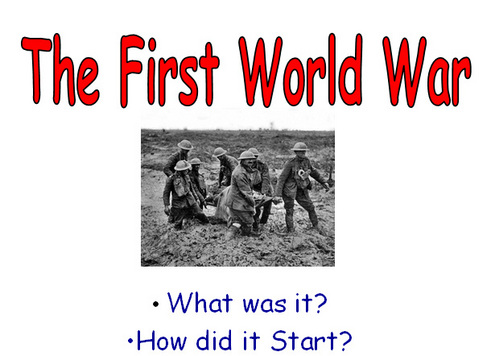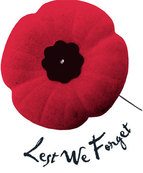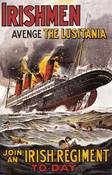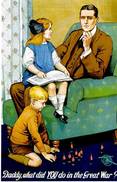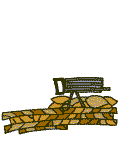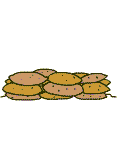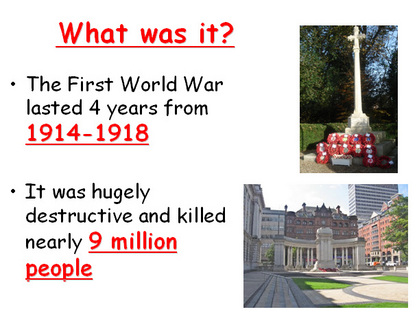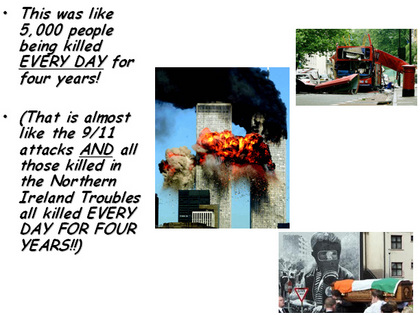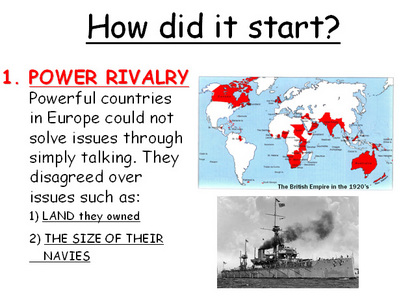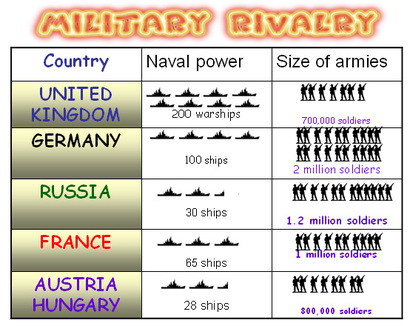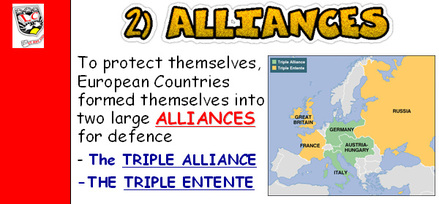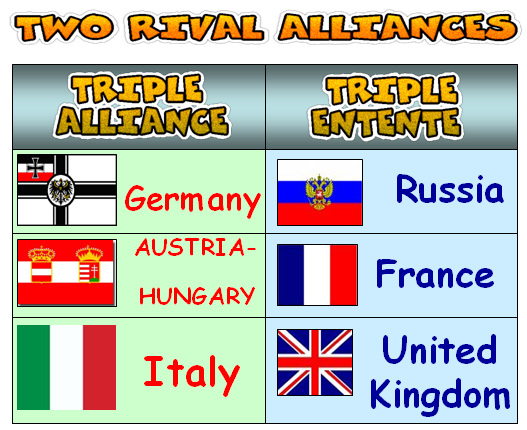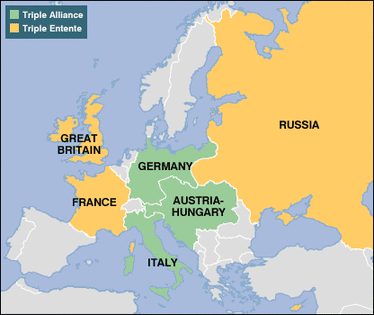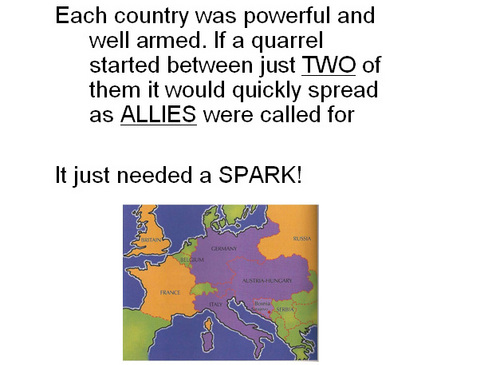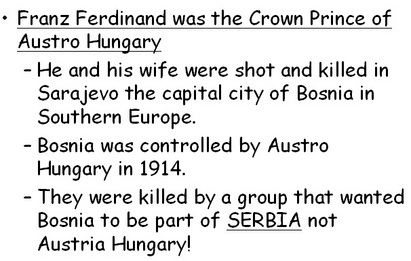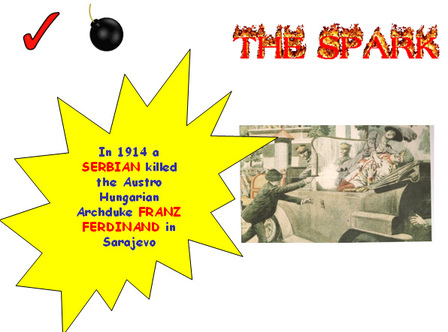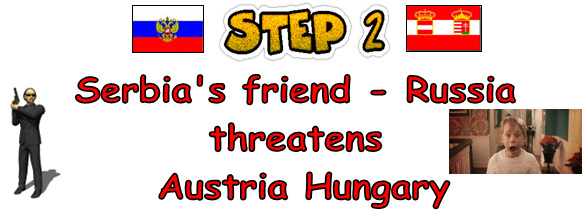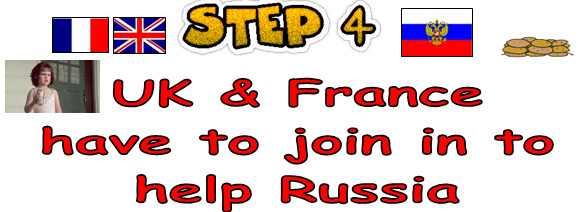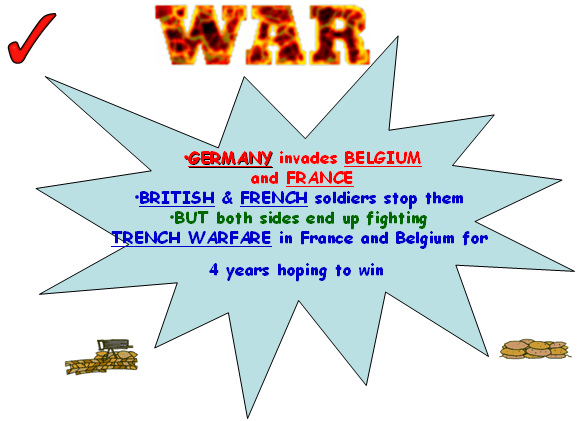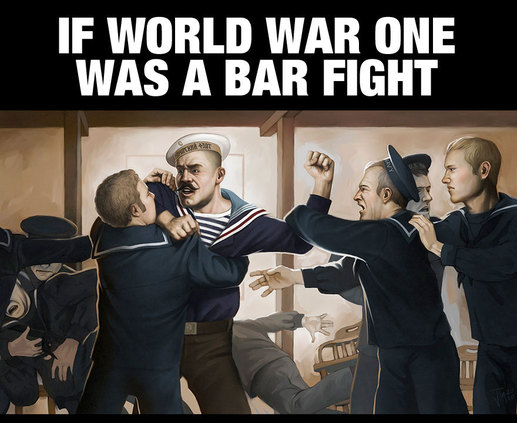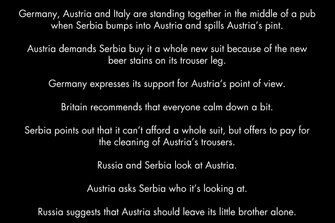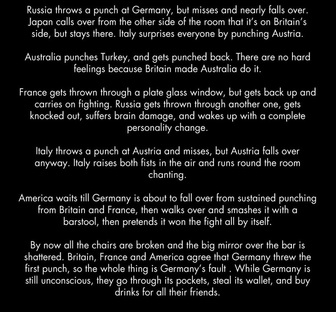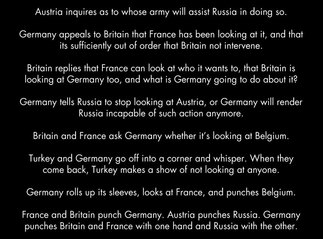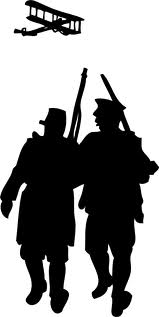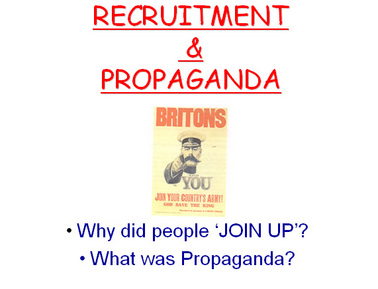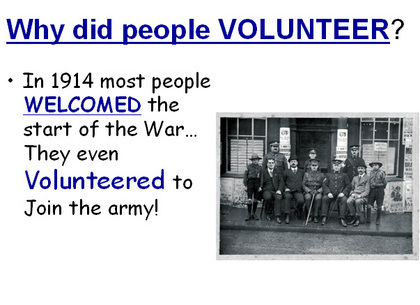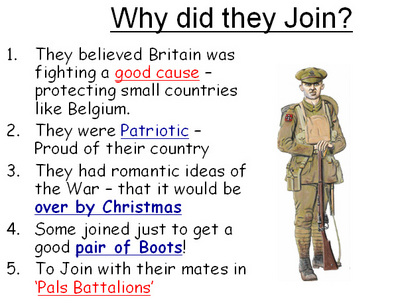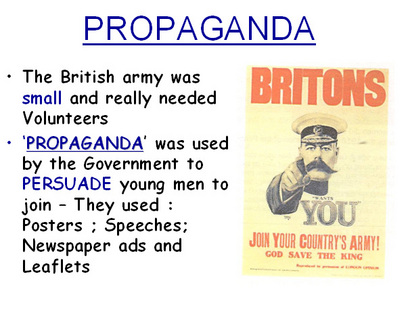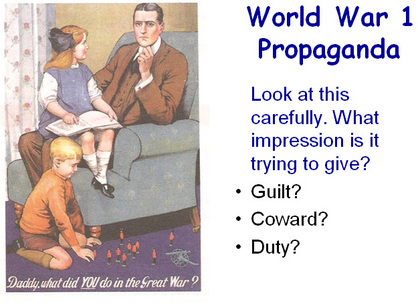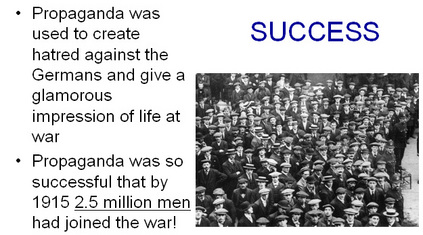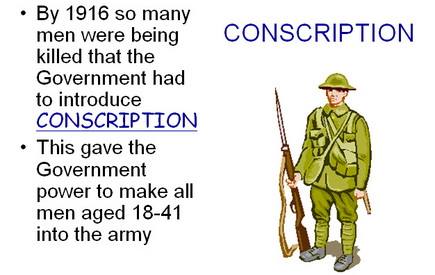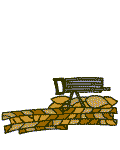|
|
The reasons the first world war started are not the same as later wars.. They are in fact quite complicated.
Europe was the richest place on earth at the start of the 20th Century with many countries like Britain and France having huge EMPIRES across the globe which helped them maximise their power. A race for more power and a need for bigger and more powerful rival Alliances would lead Europe eventually to war and destruction.
Europe was the richest place on earth at the start of the 20th Century with many countries like Britain and France having huge EMPIRES across the globe which helped them maximise their power. A race for more power and a need for bigger and more powerful rival Alliances would lead Europe eventually to war and destruction.
|
European countries became more and more powerful BUT also more and more fearful of getting involved in a European war.
|
|
|
|
|
|
A FUNNY LOOK AT THE BEGINNINGS OF WORLD WAR 1: COMPARED TO A FIGHT IN A BAR!
|
|
|
|
|
|
- By November 1914 both sides began to dig TRENCHES.
- These were defensive lines of ditches dug in ground. They would stretch for hundreds of miles from Switzerland to the English Channel
- It would take 4 years of war to break free from the Trenches- Conditions were awful. Soldiers were forced to endure terrible hardships.
|
Conditions were wet and muddy. Soldiers were exposed to all kinds of weather, bitter snows and frosts in winter, scorching heat in the Summer and wind and rain too.
The constant firing churned up the soil creating a vast wed, muddy wilderness. Many soldiers actually drowned in the mud. |
|
|
Soldiers often had to endure weeks in the trenches in cramped muddy conditions. They did not have the luxuries of showers. As a result many were affected by lice. These tiny parasites would cover the body and would bite into the skin causing nasty itching.
FACT- Soldiers nicknamed the lice 'chats' They would often sit together trying to scrape or burn the lice away from their clothing. As they would do this they would talk - This is where we get our word 'chat' from |
|
|
Can you remember how your skin goes when you are in the bath for too long? All wrinkly. Well, imagine what soldiers feet was like after spending days soaked in wet, dirty, sodden conditions. This led to a disease called trench foot. The swelling would become so bad that it would cut off circulation to parts of the body. These would turn black and would have to be amputated. Sometimes it led to blood poisoning and death.
Commanders soon began to give out new socks and replace boots. Trenches were fitted with 'duckboards' or even pumps to keep the soldiers feet as much out of the water as they could. |
|
|
Having so many men cramped together in the open air with food, together with the bodies blown apart and unburied, led to lots of rats. Some of these rats were reported to be as big as cats from the plentiful supply they could find.
They were a nuisance to the troops and soldiers would often try to kill them. |
|
|
|
The First World War was one of the first truly industrial wars. The vast amount of new inventions created at the turn of the 20th century were now often being turned into violent use. They were being used to kill humans instead of aid them.
|
Gas was first used in 1915 by the Germans. It was a horrible method of killing and greatly feared by the soldiers.
Gases like MUSTARD GAS or CHLORINE GAS were used. These would irritate the eyes or blind soldiers. It would often lead to them choking and over time 'drowning' as their lungs could take no more. Soon gas masks would be handed out to protect soldiers. Gas attacks were often vulnerable to changes in the wind and attacking soldiers would find it difficult fighting in gas masks. |
|
|
Artillery shells were fired from positions often miles behind the lines. They would churn up the soil and often bury men alive in the process. Molten hot shrapnel from shells would explode in the air above trenches. This would cause horrific injuries, disfiguring faces, blowing off arms and legs or blowing men apart.
The constant noise and fear of death would often lead to 'shellshock' where men were literally driven mad by the conditions. Today we call this Post Traumatic Stress Disorder. It often was not recognised and some men were even shot for 'cowardice' Trenches were shaped in zig zags to protect against shell blasts. Dug outs were constructed to protect men from attack |
|
|
Planes had only been invented before World War 1 but they were soon put to use.
They were firstly used for reconnaissance - spying on enemy positions and helping direct guns Soon rival airforces would begin to fight each other in the sky with machine guns developed on planes Famous Air Aces like the Red Baron would dominate the sky. Towards the end of the war planes were being used routinely to bomb from the sky FACT: Flying was considered glamorous but it was very dangerous. Planes were flimsy and sometimes made from linen cloth. Mechanical failure was common. The oil used for the planes often cause the pilots to get diarrhoea. If their planes were damaged or caught fire they would not have any parachutes. Pilots would often carry guns to shoot themselves rather than be burnt to death in mid air. |
|
Tanks were an invention thought up in the first world war to try and break the stalemate of trench warfare. The British designed these with tracks to get across the muddy land and crush barbed wire. They had thick steel cladding to protect against machine gun bullets. They were also fitted with artillery and machine guns.
However, they also had major problems. They were prone to mechanical breakdown, especially in the moonscape of no mans land. They could only go four miles per hour at top speed and were noisy so surprise was not an option. Inside the crew were cramped and subjected to the engine fumes. They could also be destroyed by shells.
At first, the tank proved very useful, scaring the Germans and breaking through trenches but it took the second world war before they were really used to maximum effect.
FACT: The word 'tank' was not what it was intended to be called. Some had wanted the term land battleships to be used. Tank was used as a secret codeword for the programme. It was to try and keep the construction of these secret and make the Germans believe they were some form of metal water tanks. Of course 'tank' stuck
However, they also had major problems. They were prone to mechanical breakdown, especially in the moonscape of no mans land. They could only go four miles per hour at top speed and were noisy so surprise was not an option. Inside the crew were cramped and subjected to the engine fumes. They could also be destroyed by shells.
At first, the tank proved very useful, scaring the Germans and breaking through trenches but it took the second world war before they were really used to maximum effect.
FACT: The word 'tank' was not what it was intended to be called. Some had wanted the term land battleships to be used. Tank was used as a secret codeword for the programme. It was to try and keep the construction of these secret and make the Germans believe they were some form of metal water tanks. Of course 'tank' stuck
|
Both the British and the Germans put their coal miners to good use in the war. They secretly tried to undermine the others trenches by slowly and quietly digging under the enemy trench. They would then pack it full of explosives setting them off in massive explosions.
FACT: These explosions were sometimes so big that they could be heard hundreds of miles away in London. They created craters so big that today some of them are lakes. |
|
|
|
|
|
|
RATS!! |
TRENCHFOOT |
|
|
|
HOW SMART ARE YOU? -
TRY THE WORLD WAR 1 QUIZ
DID YOUR ANCESTORS FIGHT IN THE WAR?
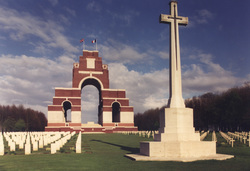
Many of our families will have someone who once served in World War 1. My Great grandfather was one. It is possible to trace your ancestors who have not returned. I have included the Commonwealth War Graves site. It lists every soldier Sailor and airman who fought and died. It also includes where they are buried or died. Try out the link

